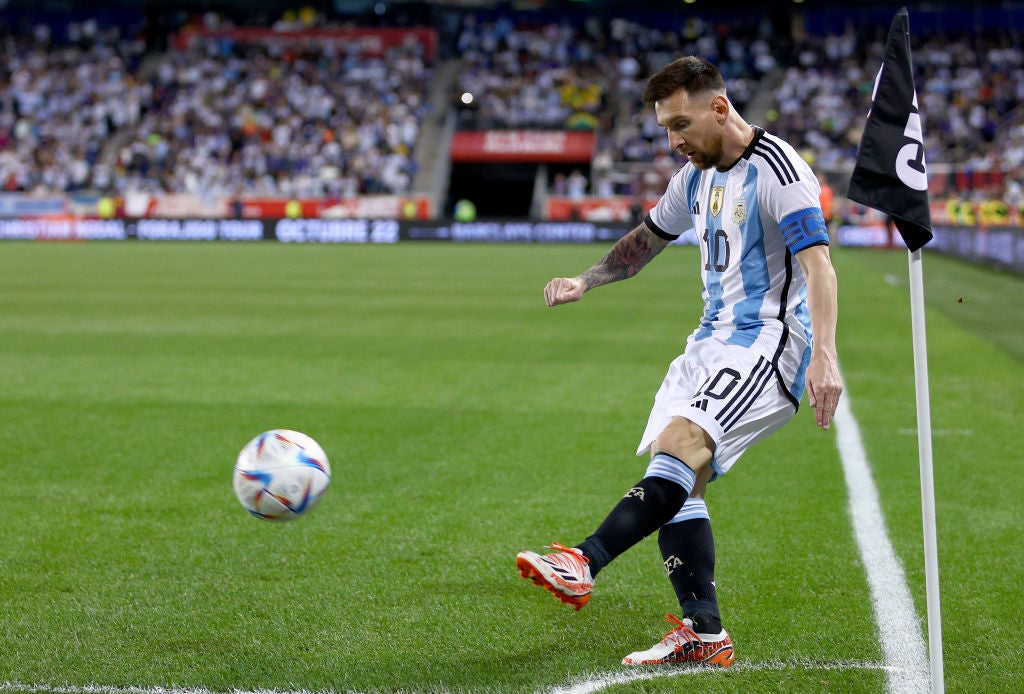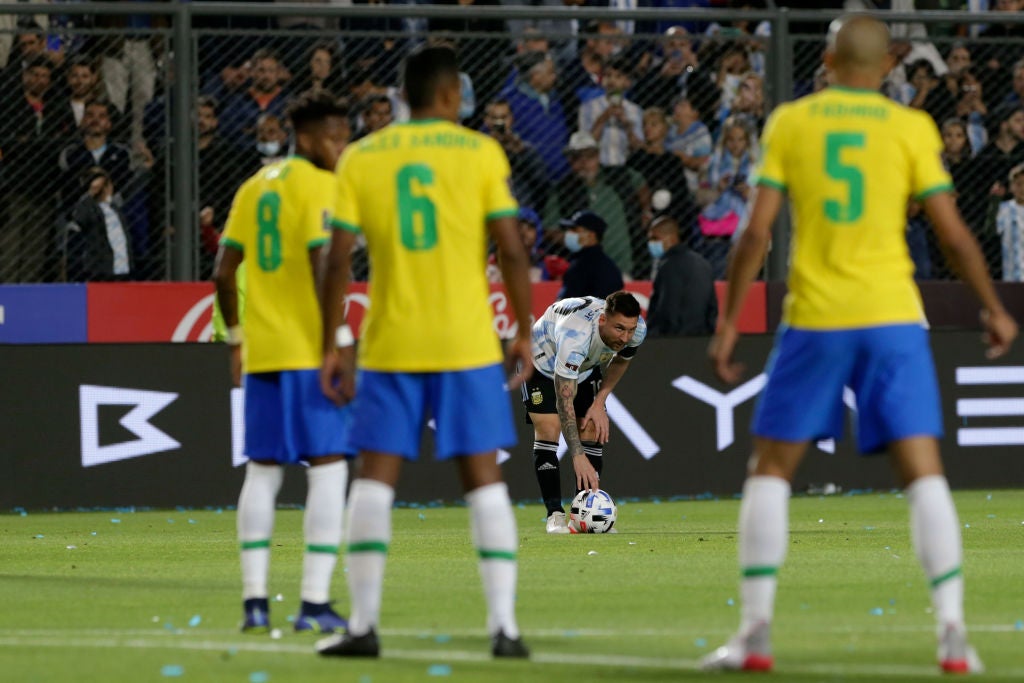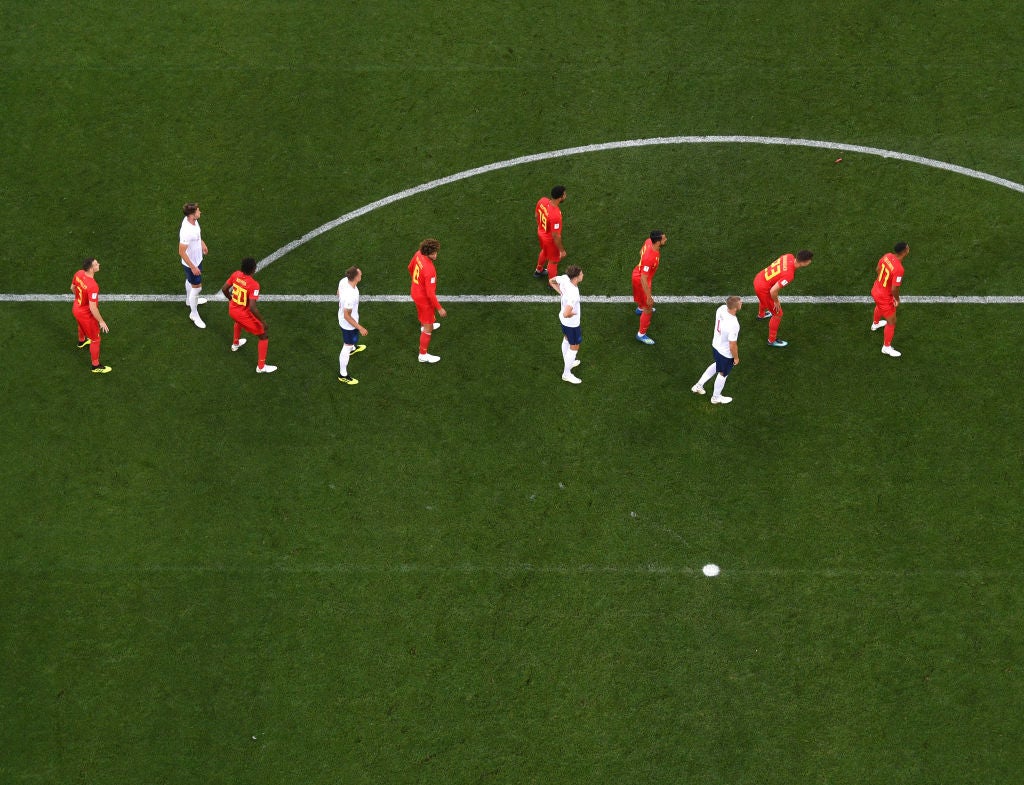‘It’ll be a big equaliser’: Why Qatar 2022 could simply be the set-piece World Cup
England excelled in this area four years ago but two coaches explain why, this time around, even more nations could increasingly turn to dead balls for success

Your support helps us to tell the story
From reproductive rights to climate change to Big Tech, The Independent is on the ground when the story is developing. Whether it's investigating the financials of Elon Musk's pro-Trump PAC or producing our latest documentary, 'The A Word', which shines a light on the American women fighting for reproductive rights, we know how important it is to parse out the facts from the messaging.
At such a critical moment in US history, we need reporters on the ground. Your donation allows us to keep sending journalists to speak to both sides of the story.
The Independent is trusted by Americans across the entire political spectrum. And unlike many other quality news outlets, we choose not to lock Americans out of our reporting and analysis with paywalls. We believe quality journalism should be available to everyone, paid for by those who can afford it.
Your support makes all the difference.The wall. The train. The celebrations after another delivery was met by a thundering forehead or a close-range rebound tap-in.
England’s set-piece success at the 2018 World Cup was initially the mark of a well-prepared side, yet soon after was used as a barometer of progress: were the Three Lions really better than some of their opponents, or just better-prepared?
For many coaches those phrases are simply asking the exact same question, given the whole point of match training is to be in a state of readiness - physically, mentally, tactically, technically - to beat the upcoming opponent. That is after all, at the most base level, the idea in football: to win.
And yet, even at a domestic and club level, those who rely or thrive off dead ball scenarios still remain at times damned by faint praise, as though the need to score off a corner might somehow outweigh the benefit of actually doing so.
Across a season, or a manager’s reign, there will be an element of truth to that. But in a condensed, tightly packed schedule, would such a trait not actually be a huge positive? One of the many marginal gains that teams and coaches look for? Could it not, at a World Cup for example, potentially be the difference between an early exit and a historic run?
In certainly was four years ago. A new record of 66 goals were scored off set plays, comprising either direct efforts or shots taken after penalties, throw-ins, free-kicks or corners. Over 62% of those came via the latter two routes. Of the 32 nations competing, 15 netted at least half their goals via set pieces. England set a new record of nine goals for a single team from dead balls.
VAR’s introduction and the penalties it produced of course had an impact, but even so, compare all that to the previous finals: 22% of goals were set pieces in 2014, but it was 39% in 2018. Are we heading for nearly half of all goals this time around being from dead balls?
There’s every reason to expect that a large volume of teams now in Qatar and preparing for their opening group stage games will think exactly that. Consider what the World Cup 2022 lacks, compared to previous editions.
For starters, there’s the week or two break after most seasons end, time for players to rest and recoup a little. Then there are usually two, perhaps even three warm-up friendlies, a chance to regain rhythm, test out tactics and settle on a side. And then there’s the whole team bonding aspect: a couple of weeks of players forming settled social groups, creating that us-versus-them mentality and going through the entire change in mindset required for major tournaments. In theory, anyway - it doesn’t always pan out that way for some squads.
None of that is happening before Qatar. A handful of countries who don’t play until the third or fourth day have perhaps arranged one friendly, but most have not.
Most have also already had to contend with losing players to late injuries, too: Christopher Nkunku, Ben Chilwell, Amine Harit and Timo Werner are among those ruled out in the final stages before, or even just after, squads were confirmed.
And all this is before a ball is kicked - once the action starts, teams have one day fewer between group games than they did at Russia 2018.
The only sides to get five days between two fixtures will be the hosts, along with their opening opponents Ecuador.
Reduced time between games for players to fully recover, along with the tough conditions in the host nation, inevitably means many training sessions will focus on lower-intensity drills and a focus on organisation, with preparation for restarts playing into both.
Set-piece coach Alex Clapham started the 2022/23 season with Southampton, before spending the end of the Brazilian season with Vasco da Gama. As a dedicated specialist in the area, few are better-placed to explain just how much of an impact such moments in the game could make.
“A lot of people I’ve spoken to in international football do say that with a lack of time together, it’s about nailing down defensive positions: this is where we are in open play, this is how we are on dead balls. That’s for individuals and distances between lines,” he told The Independent.

“International coaches will work on their defensive block and then on set pieces. England had a lot of success with that at the last World Cup and then Italy at the Euros were one of the leaders as well.
“At this World Cup, with the heat, a lot of teams will be in a low block and look to take advantage of set plays.
“It might be matchday minus two as a full session of set-pieces, or a recovery session the day after a game when we might walk through set-piece structure passively. That’s something the less-powerful nations will look at as a way to hurt opponents, it’ll be a big equaliser for them.”
It isn’t as simple as putting together a routine in attack, though, or having an ideal plan on paper at the other end of the pitch.
As with every other aspect of football, unexpected issues arise: quality, fortune, human error.
“I’ve gone into games thinking ‘we’ll definitely score five set-pieces today’ after the previous day’s session - and then the delivery doesn’t beat the first man,” Clapham added.
“It comes down to players and how they are on the day. It can be the best delivery but the timing is wrong or vice-versa, all your positions are perfect but the ball doesn’t get there.”
As for who benefits most from extended set-piece focus, there’s a real difference in emphasis and approach across the globe. It means some might only impress at one end of the pitch, while others might use it as a way to overcome differences in open-play quality - and not only some of the less-fancied nations, says Clapham.
“In South America in terms of training culture and philosophies, it’s completely different to what we’d expect in Europe. The concept of set-piece coaching there is very different - setting up a block for example was new. Zone-oriented defensive work in groups of seven or eight is very common, so can you pick out who the leaders of the zones are?
“There are a lack of specialists in South America which surprised me.
“Luis Enrique says Spain don’t work on them. They’ll do a video session but some coaches don’t believe in it whatsoever.
“For those that do, time on the grass is key. It’s about timing and feeling; what power needs to be on the ball? How long after the signal is the ball coming? Inswinging or outswinging, what’s the trajectory, where’s the block and who on? These are the finer details but ultimately delivery is everything.”

All well and good for having a plan, but the problem is often that the opposition have one too.
Again, implementing elite-level tactical plans requires time and, at a rushed tournament, there’s limited scope for such work - but set-piece practice can yield tangible improvements rapidly.
That’s the view of Thomas Gronnemark, the noted throw-in coach who has been working with, among other teams, Champions League finalists Liverpool and MLS Cup finalists Philadelphia Union.
“There’s a misunderstanding about the work, that you have to have [the coach] there every week or work for a long time to get the improvement. Small things can be changed from the start, from throw-ins you can have an effect immediately,” he told The Independent.
“For a national team it’s really clear, all teams at the World Cup could in a 45, 60 minutes session have a much better side.”
It comes down to repetition of matchday scenarios, for the Dane, and coaches providing solutions which can be easily taken on board by players. During the World Cup, successful planning sessions will come down to a matter of time and benefit, so doubling up sessions to be utilised in both defensive and offensive settings is one potential time-saver, along with being better for players’ concentration and retention.

“We normally see 40 to 60 throw-ins a game, it’s a lot of situations.
“The training influences other parts of the game too, set pieces and open play; you can improve really fast the positioning when your opponents have the throw-in, with faster reactions. And that transfers to faster restarts, goal kicks and transitions.
“Both bigger and smaller nations can use fast and clever throw-ins to improve quickly, for example.
“The only reason we talk more about attacking [set-pieces] is because it’s a little bit more sexy! To switch play, create space, cross and score - that’s attractive. It’s not as sexy to make the spaces smaller, switch markers and win back possession. That’s why we don’t talk about defending them as much, but they are just as important.”
On and off the ball, in defence and attack, teams’ set-ups at dead balls are proving ever more important on the global stage.
Senegal, Cameroon, Wales, Poland, Australia, Costa Rica - almost 20% of the nations at this World Cup qualified directly as a result of the all-important goal coming from a set piece, of one variety or another. Expect plenty more to follow in the 64 matches ahead.




Join our commenting forum
Join thought-provoking conversations, follow other Independent readers and see their replies
Comments